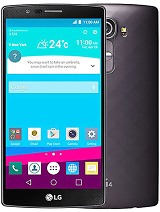GSMArena smartphone buyer's guide: May 2015
May 2015
€400-€500
This chapter will be short but sweet with only two phablets that made the cut.
The Meizu MX4 Pro boasts a 5.5" IPS screen that's actually above QHD resolution. It has borrowed the Exynos 5 Octa chipset from the Galaxy Alpha and the 20.7MP/2160p camera from the Xperia Z series (and adds a 5MP/1080p selfie camera). Then Meizu adds a fingerprint sensor, no swiping needed here.
It sounds great so far, but the Flyme OS (based on KitKat) may not be to everyone's tastes. The bigger problem is the storage though, no expansion opportunities and only 16GB as base.
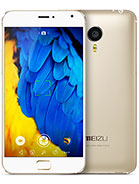
Meizu MX4 Pro |
Pros |
Cons |
|
|
|
|
| Review |
The Note 4 may be cool, but it's still pricy compared to the Samsung Galaxy Note 3. The 5.7" 1080p screen still looks quite good, the S Pen stylus works great and the 13MP camera records 2160p video. Add an attractive (if metal-free) design and you may be tempted to save the €100 or so premium you need to pay for its successor. Keep in mind that stock is running out and we've seen the Galaxy Note 3 at lower prices previously.

Samsung Galaxy Note 3 |
Pros |
Cons |
|
|
|
|
| Review |
The Sony Xperia Z3 technically falls into this price category too, though honestly we can't find enough improvement over the Xperia Z2 to justify the sizeable price gap.
Over €500
Time to abandon price guidelines and go for broke. The prices of current flagships can grow scary fast and the most expensive ones get uncomfortably close to €1,000. And that's before you reach the storage update selector.
The Motorola Nexus 6 brings the metal frame and QHD AMOLED screen that the Note 3 lacks, optical stabilization for the camera too. It throws in a rare ring LED flash, plus Moto's stereo speakers and splash-proofing. Unfortunately the Moto Maker customizations didn’t carry over.
It uses the Snapdragon 805 chipset found in the Note 4 too. It runs pure Android though, at least as Google sees it, and will be first in line for software updates. That means no split-screen multitasking options though, no stylus either. Another issue is the lack of microSD card slot. At least the base storage is 32GB. Legend has it that it was supposed to have a fingerprint sensor that was cut at the last moment.

Motorola Nexus 6 |
Pros |
Cons |
|
|
|
|
| Review |
The Samsung Galaxy Note 4 is Nexus 6's fierce rival. It's metal frame is more compact, surrounding a 5.7" QHD Super AMOLED screen. The Note 4 houses an S Pen stylus and along with proprietary multitasking software features.
The OIS-enabled camera has a slightly higher still resolution and the 3.7MP selfie camera matches the screen's resolution exactly (beating the 2MP snapper on the Nexus 6). A fingerprint sensor is on board too.
The rivalry between the Nexus 6 and the Galaxy Note 4 is too nuanced to summarize in a few quick paragraphs, luckily we have a head-to-head article to answer any burning questions.
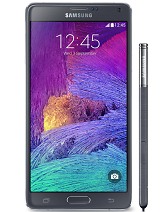
Samsung Galaxy Note 4 |
Pros |
Cons |
|
|
||
| Review |
The Samsung Galaxy Note Edge launched alongside the Note 4 and Samsung intended it as an early adopter's device but demand proved greater than that. The right side of the 5.6" Super AMOELD screen is curved, which enables extra functionality. Which costs close to €100 more.
Still, the side of the screen is more curved than the Galaxy S6 screen and it's treated differently by the software, almost like a separate screen, so it has more extensive features. The rest is pretty much the same - S Pen stylus, Snapdragon 805 chipset, 16MP camera with OIS and 2160p video, the works.
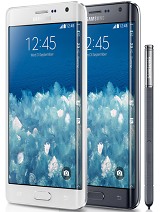
Samsung Galaxy Note Edge |
Pros |
Cons |
|
|
||
| Review |
Another unique device is the LG G Flex2. It has a curved screen too except it's the whole thing, not just one side. It's a 5.5" P-OLED that makes the Flex2 more compact and manageable than its predecessor, higher resolution too - 1080p up from 720p.
It was the first device with Snapdragon 810 chipset and launched with Android 5.0 Lollipop out of the box. It uses the rear button design of the LG G3, but the back has a special self-healing coating, which can heal away scratches in a matter of minutes.
The LG G Flex also borrows the 13MP camera with OIS, laser autofocus and 2160p video capture of the LG G3 too.

LG G Flex2 |
Pros |
Cons |
|
|
||
| Review |
LG announced the G4 while we were writing this guide and launched it the following day, only in South Korea though. While it will take some time to reach other markets, you may want to hold off on buying the G Flex2 for now.
The LG G4 is slightly curved - not as much as the Flex and not flexible either - and has a 5.5" screen of higher resolution, QHD. The optional leather back with decorative stitching makes for a rather unique look, a warm alternative to the metal and glass of other flagships. We only worry about the leather's durability.
Anyway, the camera department is highly impressive, a 16MP sensor with optical stabilization and a wide f/1.8 aperture. It lets in 80% more light compared to the G3. And with manual controls plus RAW capture mode, LG makes a serious claim for one of the best smartphone cameras around. The selfie camera is great too, an 8MP/1080p shooter.
The single comparatively weak area is the chipset - the Snapdragon 808 has only two powerful Cortex-A57 cores to back the four low-power A53s. Worse, the Adreno 418 GPU will be under lots of pressure under the QHD resolution of the screen. LG moved to a IPS Quantum panel for improved color rendering and contrast over the G3. Unlike the Samsung competition, you get removable battery and a microSD slot.
The Galaxy S6 duo is similar to the Note 4s. It's a reset of Samsung's usual design with a glass frame and while both look great, the Galaxy S6 edge is one of the best-looking devices on the market.
But let's start with the base Samsung Galaxy S6, its price tag is easier to swallow. The 5.1" Super AMOLED screen with QHD resolution is the highest quality display yet (beating even the Note 4) and Samsung went a long way to spruce up TouchWiz.
The 16MP camera with OIS and 2160p video flexed its muscles in our four-way shootout, beating its sibling Galaxy devices. The no-swipe fingerprint sensor also works better than Samsung's previous attempts, but in a controversial move the company sealed the battery and dropped the microSD card slot. The waterproofing of the Galaxy S5 is gone too.

Samsung Galaxy S6 |
Pros |
Cons |
|
|
|
|
| Review |
It's the Samsung Galaxy S6 edge that's the prettier sibling, its unique design is bound to cause some envy even among iPhone users. The screen's sides are not as curved as on the Galaxy Edge, but they are symmetrical, which looks better.
Everything else in the hardware department is the same as the flat-screened S6, but the Galaxy S6 edge has some additional software features. A night clock, various notifications and some gestures use the curved screen and add some neat functionality though we wouldn’t call it vital.
Samsung normally exacts a €100 premium on the S6 edge over the S6 with the same storage, but the Galaxy S6 prices seem to be falling faster. In many regions the Galaxy S6 edge is available only in 64GB and 128GB (skipping the 32GB option) without an additional price hike over a 32GB Galaxy S6, which evens out the price a bit.

Samsung Galaxy S6 edge |
Pros |
Cons |
|
|
|
|
| Review |
Unlike Samsung, HTC kept its traditional design that goes back to the HTC One from 2013. It tweaked the design with a two-color-tone look and we were always fans of metal unibody phones.
HTC also recognized that the camera is an issue and grabbed a 20.7MP sensor capable of 2160p video. We were glad to see UltraPixel go (at least get moved to selfie camera duties), but the new shooter doesn’t live up to Galaxy S6 or iPhone 6 standards.
Anyway, the stereo speakers on the front are better than what either Sony or Motorola have to offer and the audio quality with headphones plugged in is perfect. The 5" 1080p screen is behind on resolution and is surrounded by chunky bezels.
The Snapdragon 810 chipset in the HTC One M9 got some negative attention due to overheating concerns and while it does run hotter than the Galaxy S6 (which also warms up), it doesn’t become an issue unless you really push the chipset. Again, the One M9 and Galaxy S6 rivalry is too turbulent to summarize so you can get the full picture from our head-to-head article.
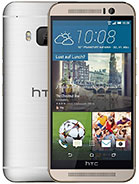
HTC One M9 |
Pros |
Cons |
|
|
|
|
| Review |
If you want an all-metal flagship, the Apple iPhone 6 is the more popular choice. It brings some much needed updates over the iPhone 5s, but we still think it's a bit behind its Android competition.
Now, the Apple iPhone 6 Plus is much closer to the mark. It brings the first increase in screen sharpness on iPhone since 2010 and adds optical stabilization. The jump in screen size is braver than the base model, 4.7" is considered "compact" in Android-land these days.
The 5.5" 1080p screen puts the iPhone 6 Plus in direct competition with Android phablets, the custom chipset is a great performer (especially for games). The 8MP camera (even with OIS) is starting to show its age, but it did quite well. Also, we have to give it to Apple - they weren’t the first to add a fingerprint sensor, just the first to get it to work just right.
P.S. We've picked out the 64GB model, 16GB will just become a pain the moment iOS needs to update. It's just not worth cheaping out on a pricy flagship like the Apple iPhone 6 Plus. Also, check out our iPhone 6 Plus vs. Galaxy Note 4 article for a detailed comparison.

Apple iPhone 6 Plus |
Pros |
Cons |
|
|
|
|
| Review |
Reader comments
- Moony Zaher
- 05 Jun 2015
- N3A
I bought samsung s5 last year,it is amazing device and i think the android os is better than os i used before : ios ,blackberry ,windows .. Early in 2015 .. other brands released better phones than my s5 , so as an advise :please choose a satisfyin...
- kavi
- 02 Jun 2015
- IWU
Oneplus one s missing..
- phoney
- 02 Jun 2015
- YaH
Only a few phones support tmobile LTE band 12. Now is not a good time to buy a new GSM phone if you use tmobile.
